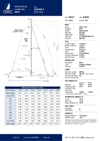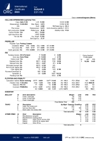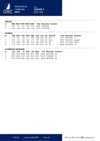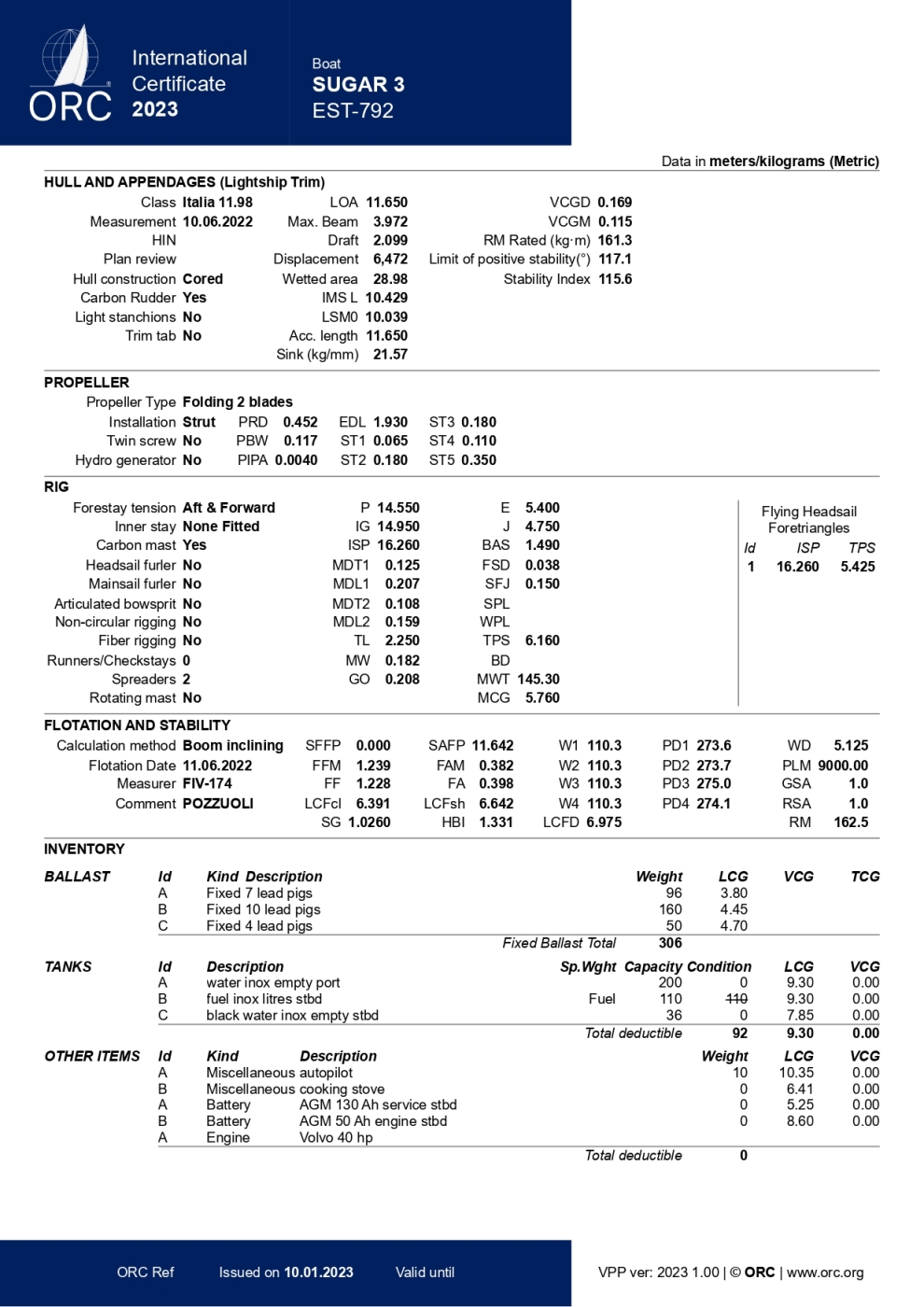ORC International certificates comes in four A4 pages. The first page gives a general presentation of the boat with its rated boat speeds, in addition to the main hull, propeller, rig and sail measurements.
It also contains information needed to enter the race like crew weight, limitations on use of sails, and stability index with the rated righting moment.




The second page is presenting scoring options in two sections: default scoring options that are present on each certificate and other scoring options that are selected for use by the relevant National Rating office.
The third page is showing a detailed list of measurements of the Hull and appendages, propeller, rig, flotation, stability, and the measurement inventory. The fourth page is reserved for measurements within the sails inventory.
Place the cursor over different parts of the certificate page for a brief explanation. More details are given in the measurement and scoring sections, while complete definitions can be found in the appropriate rules documents.


